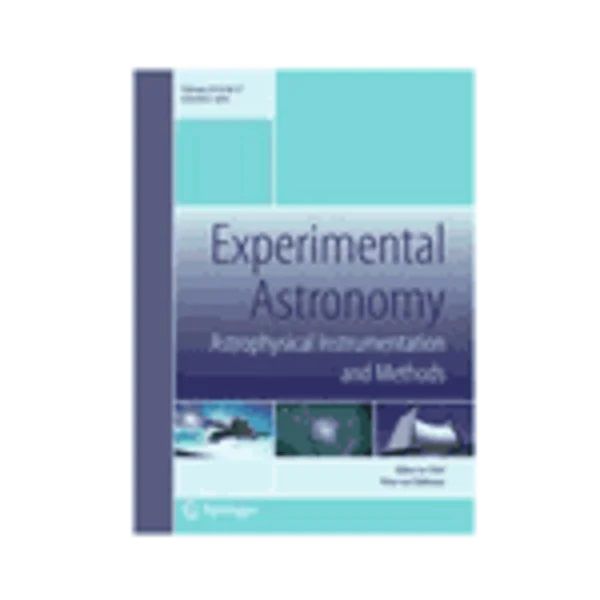-
trojans’ odyssey: unveiling the early history of the solar system
جزئیات بیشتر مقاله- تاریخ ارائه: 1392/07/24
- تاریخ انتشار در تی پی بین: 1392/07/24
- تعداد بازدید: 1187
- تعداد پرسش و پاسخ ها: 0
- شماره تماس دبیرخانه رویداد: -
in our present understanding of the solar system, small bodies (asteroids, jupiter trojans, comets and tnos) are the most direct remnants of the original building blocks that formed the planets. jupiter trojan and hilda asteroids are small primitive bodies located beyond the ‘snow line’, around respectively the l4 and l5 lagrange points of jupiter at ∼5.2 au (trojans) and in the 2:3 mean-motion resonance with jupiter near 3.9 au (hildas). they are at the crux of several outstanding and still conflicting issues regarding the formation and evolution of the solar system. they hold the potential to unlock the answers to fundamental questions about planetary migration, the late heavy bombardment, the formation of the jovian system, the origin and evolution of trans-neptunian objects, and the delivery of water and organics to the inner planets. the proposed trojans’ odyssey mission is envisioned as a reconnaissance, multiple flyby mission aimed at visiting several objects, typically five trojans and one hilda. it will attempt exploring both large and small objects and sampling those with any known differences in photometric properties. the orbital strategy consists in a direct trajectory to one of the trojan swarms. by carefully choosing the aphelion of the orbit (typically 5.3 au), the trajectory will offer a long arc in the swarm thus maximizing the number of flybys. initial gravity assists from venus and earth will help reducing the cruise time as well as the δv needed for injection thus offering enough capacity to navigate among trojans. this solution further opens the unique possibility to flyby a hilda asteroid when leaving the trojan swarm. during the cruise phase, a main belt asteroid could be targeted if requiring a modest δv. the specific science objectives of the mission will be best achieved with a payload that will perform high-resolution panchromatic and multispectral imaging, thermal-infrared imaging/ radiometry, near- and mid-infrared spectroscopy, and radio science/mass determination. the total mass of the payload amounts to 50 kg (including margins). the spacecraft is in the class of mars-express or a down-scaled version of jupiter ganymede orbiter. it will have a dry mass of 1200 kg, a total mass at launch of 3070 kg and a δv capability of 700 m/s (after having reached the first trojan) and can be launched by a soyuz rocket. the mission operations concept (ground segment) and science operations are typical of a planetary mission as successfully implemented by esa during, for instance, the recent flybys of main belt asteroids steins and lutetia.
مقالات جدیدترین رویدادها
-
استفاده از تحلیل اهمیت-عملکرد در ارائه الگوی مدیریت خلاقیت سازمانی و ارائه راهکار جهت بهبود
-
بررسی تاثیر ارزش وجوه نقد مازاد بر ساختار سرمایه شرکت های پذیرفته شده در بورس اوراق بهادار تهران
-
بررسی تأثیر سطح افشای ریسک بر قرارداد بدهی شرکت های پذیرفته شده در بورس اوراق بهادار تهران
-
بررسی تأثیر رتبه بندی اعتباری مبتنی بر مدل امتیاز بازار نوظهور بر نقد شوندگی سهام با تأکید بر خصوصی سازی شرکت ها
-
تأثیر آمیخته بازاریابی پوشاک ایرانی بر تصویر ذهنی مشتری پوشاک ایرانی (هاکوپیان)
-
سنجش میزان رضامندی مددجویان از خدمات توانبخشی جمعیت هلال احمر شهر تهران
-
بررسی تاثیر سقف در فرکانس ها و شکل مودهای ارتعاشی مخازن سقف ثابت نگهداری مایعات
-
ارزیابی و مدیریت منابع آب غیرمتعارف (پساب تصفیه شده) شهرستان سبزوار با استفاده از روش چند معیاره تحلیل سلسله مراتبی (ahp)
-
a new control method for mimo first order time delay non-square systems
-
acidic dye wastewater treatment onto a marine macroalga, nizamuddina zanardini (phylum: ochrophyta)
مقالات جدیدترین ژورنال ها
-
مدیریت و بررسی افسردگی دانش آموزان دختر مقطع متوسطه دوم در دروان کرونا در شهرستان دزفول
-
مدیریت و بررسی خرد سیاسی در اندیشه ی فردوسی در ادب ایران
-
واکاوی و مدیریت توصیفی قلمدان(جاکلیدی)ضریح در موزه آستان قدس رضوی
-
بررسی تاثیر خلاقیت، دانش و انگیزه کارکنان بر پیشنهادات نوآورانه کارکنان ( مورد مطالعه: هتل های 3 و 4 ستاره استان کرمان)
-
بررسی تاثیر کیفیت سیستم های اطلاعاتی بر تصمیم گیری موفق در شرکتهای تولیدی استان اصفهان (مورد مطالعه: مدیران شرکتهای تولیدی استان اصفهان)
-
تجربه زیسته دانشجویان نابینا از دانشگاه: یک مطالعه پدیدارشناسی
-
بررسی تطبیقی رویه های شاخص برون گرایی شخصیت از منظر روان شناسی و متون اسلامی
-
کنترل کیفیت آماری ساخت شناورهای آلومنیومی زیر 24 متر
-
نگاهی به تساوی حقوق زن و مرد در جامعه
-
performance and management of cost in the construction industry




سوال خود را در مورد این مقاله مطرح نمایید :